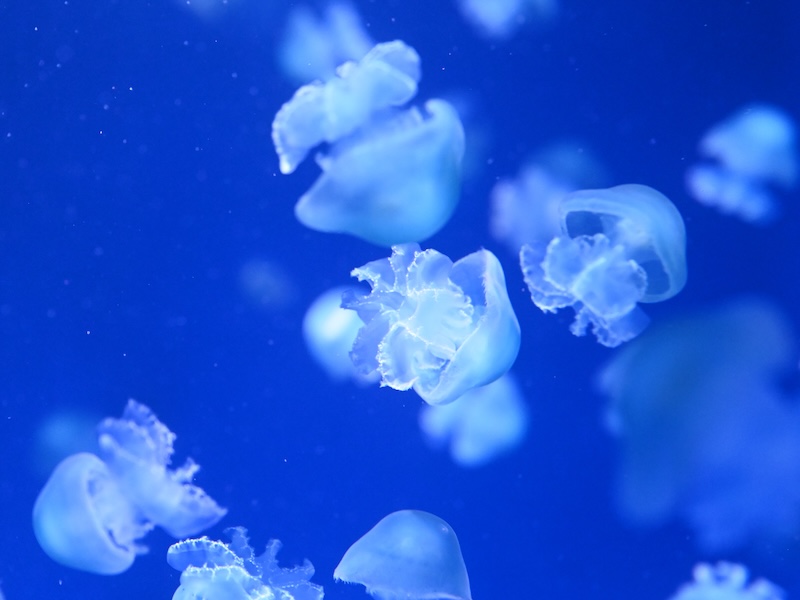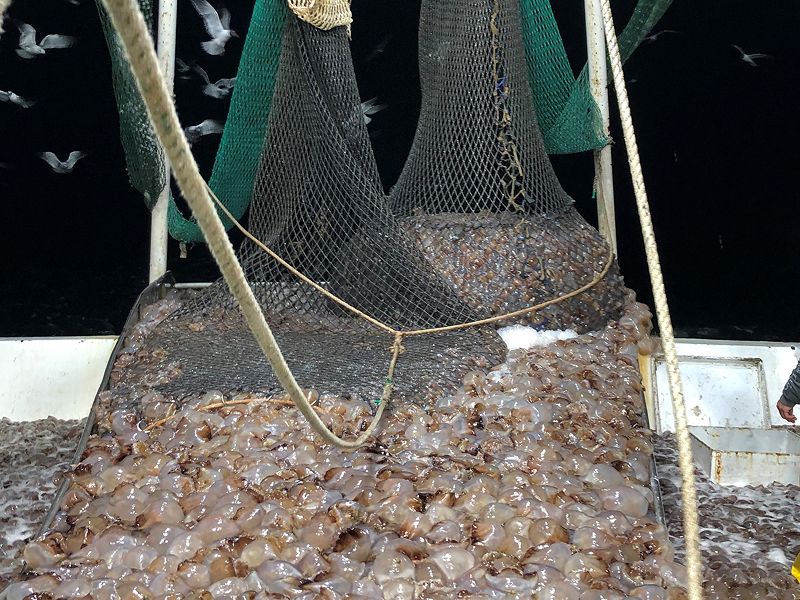Why jellyfish collagen? What is SimplySEA™?
Traditional collagen is often extracted from animal by-products using heavy processing and chemical treatments. In contrast, jellyfish are naturally composed of three main components: water, protein, and minerals.
Thanks to this remarkable simplicity, we’re able to gently separate out nearly all of the water and minerals, leaving behind the protein, most of which is natural jellyfish collagen. From there, our proprietary process uses minimal intervention to transform it into our low molecular weight jellyfish collagen peptide blend, what we call SimplySEA™.
Read our blog to learn more about Jellyfish collagen
What species of jellyfish do you use?
We use the cannonball jellyfish. A native Georgia jellyfish species.
Are jellyfish considered an allergen?
Jellyfish are currently not classified as a major food allergen under FDA regulations. However, individuals with fish or shellfish allergies may still be at risk of allergic reactions to jellyfish. While jellyfish collagen is distinct from traditional fish and shellfish sources, sensitivities vary from person to person. If you have concerns, we recommend consulting a healthcare professional before consuming or using any jellyfish-based products.
Are these jellyfish safe to eat?
Yes, our species has been harvested and consumed in Asian markets for over 30 years. The difference? We isolate its key ingredient, collagen, and transform it into a versatile powder that goes far beyond food, delivering its powerful benefits across a range of applications.
How long do jellyfish typically live in the wild?
Georgia jellyfish have a relatively short life cycle, reaching maturity within 3 to 6 months and living approximately 6 to 9 months in their natural habitat.
Are jellyfish populations increasing?
Great question! While researchers often say yes, no comprehensive population studies have fully explored this in depth. What we do know is that jellyfish are highly adaptable to changing ocean conditions, like temperature, pH, and acidity. Because of their short lifespans and simpler biology, the leading hypothesis is that jellyfish can adapt more quickly than higher trophic level species such as cod and tuna.
Why do I see jellyfish washed up on the beaches?
As their life cycle ends, jellyfish naturally drift to the beach, marking the final chapter of their ocean journey. But what if this wasn’t where their story ended?
At JellyCo, we upcycle wild Georgia jellyfish before they reach the shore, transforming them into jellyfish collagen that benefits both people and planet. It’s a way to create jobs, reduce environmental impact, and honor nature’s design.
We’re proud to turn what’s often discarded into something meaningful.
Because to us, jellyfish isn’t a trend, it’s the future. And it’s here to stay.
What are the skin benefits of jellyfish collagen?
Jellyfish collagen is a powerful marine-derived ingredient that may support skin hydration, elasticity, and the reduction of visible wrinkles. By stimulating the natural production of collagen and elastin, it may restore firmness and promote a smoother, more radiant complexion. Its natural antioxidant properties can help support the skin’s defense against everyday environmental stressors, leaving it looking healthier and revitalized.
Moisturizing Effect of Jellyfish Collagen Extract
Aurelia aurita jellyfish collagen: Recovery properties
A Composite Jellyfish Collagen Hydrogel with Skin-Matched Modulus Enables Programmed and High-Quality Wound Healing
What are the predominant amino acids within SimplySEA™?
SimplySEA™ is a rich source of both essential and nonessential amino acids, setting it apart as a distinct and valuable form of marine collagen. Glycine is the predominant amino acid and has been detected in concentrations up to 48% higher than those found in traditional bovine collagen. Jellyfish collagen also contains notably high levels of hydroxylysine, one of the highest among known natural sources, differentiating it further from bovine and fish-based alternatives.
Additional amino acids such as glutamic acid, alanine, aspartic acid, proline, hydroxyproline, arginine, and threonine contribute to its distinct composition, supporting enhanced bioavailability and offering promising benefits for overall health and wellness.
Links:
Health Benefits of Glycine
Glycine improves biochemical and biomechanical properties following inflammation of the a chilles tendon
An Update of the Promise of Glycine Supplementation for Enhancing Physical Performance and Recovery
The effect of glycine administration on the characteristics of physiological systems in human adults: A systematic review
Proline and hydroxyproline metabolism: implications for animal and human nutrition
Bioactivity, Storage Stability, and In Silico Insights of Collagen-Derived Peptides from Jellyfish (Stomolophus sp. 2) Mesoglea
What is the efficacy of jellyfish collagen?
What is the molecular weight of SimplySEA™?
SimplySEA™ delivers a highly advanced collagen profile, crafted through our proprietary process to yield a rich concentration of naturally low molecular weight peptides, targeting 2 kDa in size.
What makes our collagen stand out is its unique origin and processing. The natural structure of jellyfish collagen allows for the formation of small peptides without requiring extreme processing. This approach results in a cleaner, more sustainable product, paving the way for more effective and eco-conscious formulations.
What type of collagen is present in SimplySEA™?
Great question! After years of jellyfish research, our team learned something pretty amazing. Their collagen is truly one of a kind. Because jellyfish are invertebrates, their collagen doesn’t follow the same naming rules “type I/II/III” you’ve probably seen. That makes it a fresh, exciting new source of skin-nourishing peptides you won’t find anywhere else.
What really sets SimplySEA™ apart is our proprietary process. We’ve carefully optimized it to produce low molecular weight peptides that are easier for your body to absorb. Thanks to our updated method, the final product is cleaner, more effective, and refreshingly subtle in scent.
Links:
The emergence of jellyfish collagen: A comprehensive review on research progress, industrial applications, and future opportunities
The effect of oral collagen peptide supplementation on skin moisture and the dermal collagen network: evidence from an ex vivo model and randomized, placebo-controlled clinical trials









